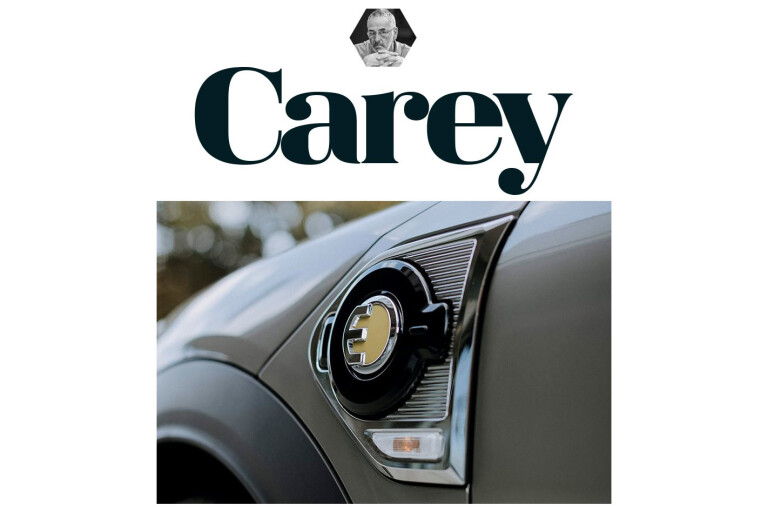
Among eucalypts, a koala has little to worry about. What it needs to survive is all around and easily found. Which makes drivers of conventional cars rather like the sleepy, tree-dwelling marsupial. Places to replenish the energy needed to keep our oil-consumers running are never far away.
Driving a plug-in is different, as using a Mini Cooper S E Countryman All4 in the UK for a fortnight made abundantly clear.
There’s way better EV infrastructure in the UK than Australia. Plug-ins have around a 2.5 percent, and growing, share of the new-car market there. Almost 60,000 were sold in 2018; one quarter of them pure EVs like the Nissan Leaf, the remainder plug-in hybrids like the E Countryman. Like eucalypts, public charging points aren’t exactly common in the UK, but neither are they impossible to find.
It wouldn’t be too hard, I reasoned, to drive mostly electric. The Mini’s 7.6kWh lithium-ion battery could be charged each night from a normal British power socket. Once the electricity was used (after 20 to 30km in British winter conditions, I found), the E Countryman would switch to hybrid mode and fire up its 1.5-litre turbo triple, and I’d head to the most convenient public charger for a quick top-up. Fine. In theory...
At my request, Mini UK had thrown an extra cable into the E Countryman. With Type 2 (or Mennekes) plugs at each end, it would let me connect to public AC chargers. Physically hooking it up to a big service complex on the M40 motorway near Oxford was easy, but getting electrons to flow wasn’t.
Having downloaded the charge provider’s app and punched in my credit card details, I was authorised to begin charging.
But the E Countryman wouldn’t initialise the charging session. Maybe the device was simply too powerful for the Mini’s on-board battery charger. Disappointed, I drove off to the warble of the front-mounted three-cylinder engine, not the whine of the rear-mounted electric motor.
The next time I needed an on-the-move recharge I decided to rely on the Mini’s sat-nav. I could surely count on a charger it led me to being compatible with the car, I reasoned. The closest one at the time was less than 2km away, in the carpark of the big Bicester Village outlet shopping complex.
Sadly, the alleged location had been built over, and there were no signs pointing to a new charging station. So I headed to a nearby Little Chef, where the sat-nav promised another charger. What I found was a Burger King. It was another fail at the next place I tried, a BP on the A34. I did a careful search of both the servo and the carpark of the nearby Starbucks and failed to find the promised charger.
By now cursing the obviously outdated digital mapping installed in the Mini, I fired up Zap-Map on my iPhone. This popular app provides detailed charger info, supplemented by frequent user updates. In short, it’s trustworthy.
Zap-Map guided me to a country restaurant just off my planned route. Two 7kW chargers were there, as advised. But in the adjacent spaces were a Kia Picanto and a Toyota Yaris, neither of them in need of charging, despite prominent ‘EV Only’ signage.
So there’s a big question car makers and EV support organisations should be asking before attempting to take plug-ins mainstream in Australia. It’s a simple one. How much aggravation will a koala bear?

COMMENTS